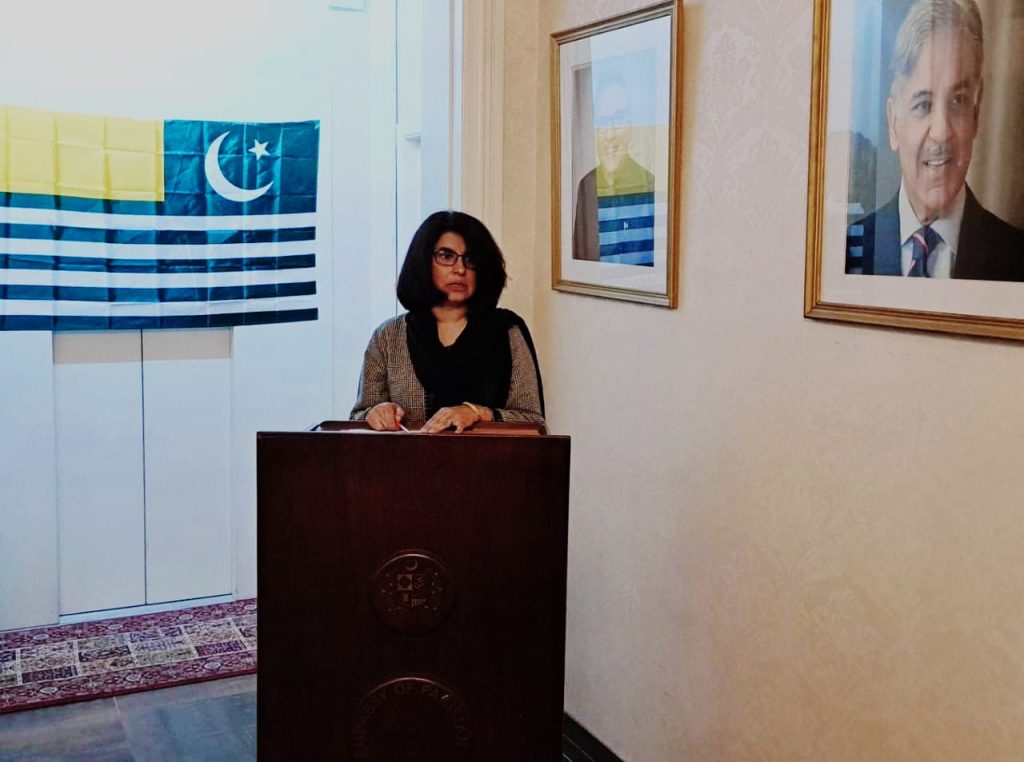
By Sarah Sax
- In the almost seven years since Colombia signed a peace agreement with FARC, its largest rebel movement, farmers, miners, loggers and armed groups have accelerated deforestation, often in tandem with environmental conflicts.
- The Colombian government has responded to this uptick with militarization, which has done little to quell deforestation and has often stoked more violence.
- Now, a new group of researchers from the Del Rosario University in Colombia are piloting a different approach, developing a toolbox that communities and local governments can use to reconcile environmental and social conflicts as a way to stop deforestation and bring more peace to the region.
For the last several years, soldiers have been entering the Colombian Amazon armed to the teeth to fight deforestation, surging ever since the 2016 peace accord between rebel group FARC and the government. But when Simon Uribe Martinez enters the jungle, his only weapon is a large wooden box, filled with colorful figurines and large pieces of paper. The 2-kilogram (4.4-pound) box, which resembles more a board game than a game of war, symbolizes a new attempt to stop deforestation and bring peace to an area that has seen successive waves of violence for the last several decades — most recently from the national military attempting to stop miners, loggers and ranchers from eating away at the forest.
Historically, the government has put the cause of deforestation squarely on coca growers and ranchers using cattle to launder money. While this might be true in some regions, said Uribe Martinez, a geographer whose research has focused on the impact of infrastructure in the Amazon, the region is incredibly diverse, and the drivers of deforestation — as well as the solutions — are not homogenous.
“Rather than take the language of the government in terms of direct and indirect causes of deforestation, we are trying to understand what are the historical trajectories and transformations that can help us understand why our territory has transformed in time and what has been the role of deforestation,” Uribe Martinez told Mongabay.
Uribe Martinez is part of the Selva y Conflicto (Forest and Conflict) research team at Del Rosario University in Bogotá that is working to find alternative solutions to tackling deforestation. One of the primary things that sets them apart from the government’s approach is their emphasis on peace building as a way to also tackle environmental issues like deforestation. With that in mind, they have developed a toolbox – which Uribe Martinez carries into the jungle – that includes ways of engaging with farmers and peasants on the forest boundary combined with state-of-the-art technology such as geospatial analysis and satellite imagery. Using this toolbox, the team can better diagnose the causes of deforestation and violent conflict, ultimately equipping policymakers, civil society leaders and local community members to develop more sustainable solutions.
Defining the problem first
Since reaching the 2016 peace agreement with FARC, deforestation in Colombia has surged from 49,600 hectares (123,000 acres) of primary forest loss in 2015 to 128,000 hectares (316,000 acres) in 2022. Deforestation is mainly driven by cattle, with smaller amounts attributable to coca and other crops.
Although deforestation is often seen as a biophysical process — cutting down trees — it is just as much a socio-environmental process, Javier Eduardo Revelo Rebolledo, a political scientist and co-leader of the project who has been researching deforestation in the Amazon since the 2016 peace accord, told Mongabay.
People live in and around forests, and those forests are deeply connected to people’s livelihoods, identities and cultures as well as enmeshed with local politics. For example, before the peace accord, deforestation was much lower partly because FARC and other rebel groups needed the tree cover to hide their activities. In contrast, the paramilitary wanted less tree cover so it could see its adversaries.
The government’s response to deforestation has been to send highly militarized battalions into national parks to prevent people from cutting trees. The most recent campaign, “Operation Artemis,” launched in 2019, sent heavily militarized battalions to areas suffering deforestation in Colombian national parks, where anywhere from 14,000-22,000 people still live. But according to calculations by Mongabay Latam and Cuestión Pública, between 2019 and 2021 the operation barely tackled 3% of the country’s total deforested area while costing the country more than 3.4 billion pesos (just under $830,000).
Critics have argued that military campaigns like this one target the weakest links of the chain: poor peasants in rural areas who are trying to eke out a living in the forest while being caught between violent insurgent groups and large land-grabbers and agribusinesses. “Operation Artemis has not significantly targeted the large deforesters with political connections in the territory. It has, above all, [targeted] small settlers, who are responsible, but to a lesser extent,” said Nicola Clerici, an ecologist and researcher from Del Rosario University in Colombia.
These attempts have often provoked more conflict. For example, in the department of Caquetá, communities have denounced the army for burning their houses and even destroyed the road in an attempt to keep out the military. Objectives for reducing deforestation need to be much more diverse than just stopping the felling of trees, said Revelo Rebolledo. If you try to reduce deforestation but, in the process, you end up fueling more conflict, as in the case of the current militarization, then it will likely not be a sustainable or equitable solution.
“It is not just the ends but also the means we need to be concerned with,” said Revelo Rebolledo. “We need to find a way to reconcile environmental concerns with peace-building concerns.”
Defining the solutions
Part of the problem is that the drivers of deforestation in the Amazon are often oversimplified, said Uribe Martinez. For example, in February 2021, Colombian President Iván Duque told the press that “undoubtedly, much of this deforesting criminal cattle farming that has reached this region is also linked to organized armed groups’ money laundering operations, which bring cattle without movement licenses and also expose our country to threatening circumstances.”
While this may be true in some regions, the oversimplification of the problem has led to solutions that have at best been ineffective and at worst aggravated local tensions.
“What we were fighting against from the beginning was seeing the Amazon as a homogenous region. What happens in Caquetá with cattle is very different from Putumayo,” said Uribe Martinez. “The only way to understand this conflict is through understanding the regional differences.”
To understand the social and environmental conflicts at the root of deforestation, the team has piloted the use of the wooden toolbox. The physical box looks from the outset like a board game, with different colored figurines and pieces. In addition to satellite information about the territories, communities themselves work then to create their own maps of conflicts — these maps include not only geographical areas and causes of deforestation, but also relationships and values, building a much more holistic understanding of the territory.
The team developed the tool in collaboration with the ITArKA Foundation in Puerto Guzmán, in the municipality of Putumayo, and local communities. The challenge was to reconcile the research methods often used by academics and the needs of local leaders and communities. “It was kind of a laboratory,” Rebolledo Revelo said. Now that they have a prototype of the toolbox developed, they are working to expand their networks to other municipalities and organizations.
While the toolbox is designed primarily for organizations accompanying environmental and territorial community processes, the researchers recognize the importance of collaboration with local governments, which have participated in several workshops they have given about the toolbox. Especially for the authorities who will be elected in October, the research teams hope the tool will become a valuable instrument for their planning processes next year.
“This tool can be effective when you have engaged organizations and communities,” Revelo Rebolledo told Mongabay “But it’s also a process that often takes years — very different from a government engagement that is short-term.”
One result from their initial implementations has been to confirm the importance that communities put on getting access to things like health care and education. Deforestation is not just about illegal drivers and capital accumulation; many people are also just trying to survive, Revelo Rebolledo told Mongabay. “When we talk about deforestation as just an environmental issue, we don’t think about it as a social issue that needs to deal with development,” he said.
Internationally, researchers and practitioners are increasingly focusing on solutions to stopping deforestation that go beyond the simple idea that physically barring people from entering or using the forest will be a sustainable solution. This aligns with a growing trend of valuing and prioritizing the knowledge and demands of the communities most affected by deforestation.
For example, the organization Health In Harmony, which works in Indonesia, Brazil and Madagascar, identified rising medical and fertilizer costs as a prime reason why communities engage in deforestation. By providing medical services and training in sustainable agriculture, their project in Bukit Baka Bukit Raya National Park in Indonesia has avoided the emission of 22 million metric tons of carbon, according to the Woodwell Climate Research Center.
In theory, the aim of the toolbox is to give communities the means to diagnose problems and come up with solutions that could look very similar to this; solutions that go beyond stopping tree loss and get to the heart of the conflicts and needs of the communities themselves.
Now that the grant has run its course, the developers of the Selva y Conflicto toolbox are in the process of writing up their results and disseminating their toolbox and findings to other researchers, communities and organizations in other municipalities through workshops and online resources. With so much information on deforestation and policy solutions to tackling it being either in English or focused on the Brazilian Amazon, the researchers also see this toolbox as a way to diversify the conversation around deforestation in the Amazon as an international region.
“We know there is a consensus that current policies don’t work — the policy of coercion has failed,” said Uribe Martinez. “We know what doesn’t work — now we need to find out what does.”
—
This post was previously published on news.mongabay.com and under a Creative Commons license CC BY-ND 4.














